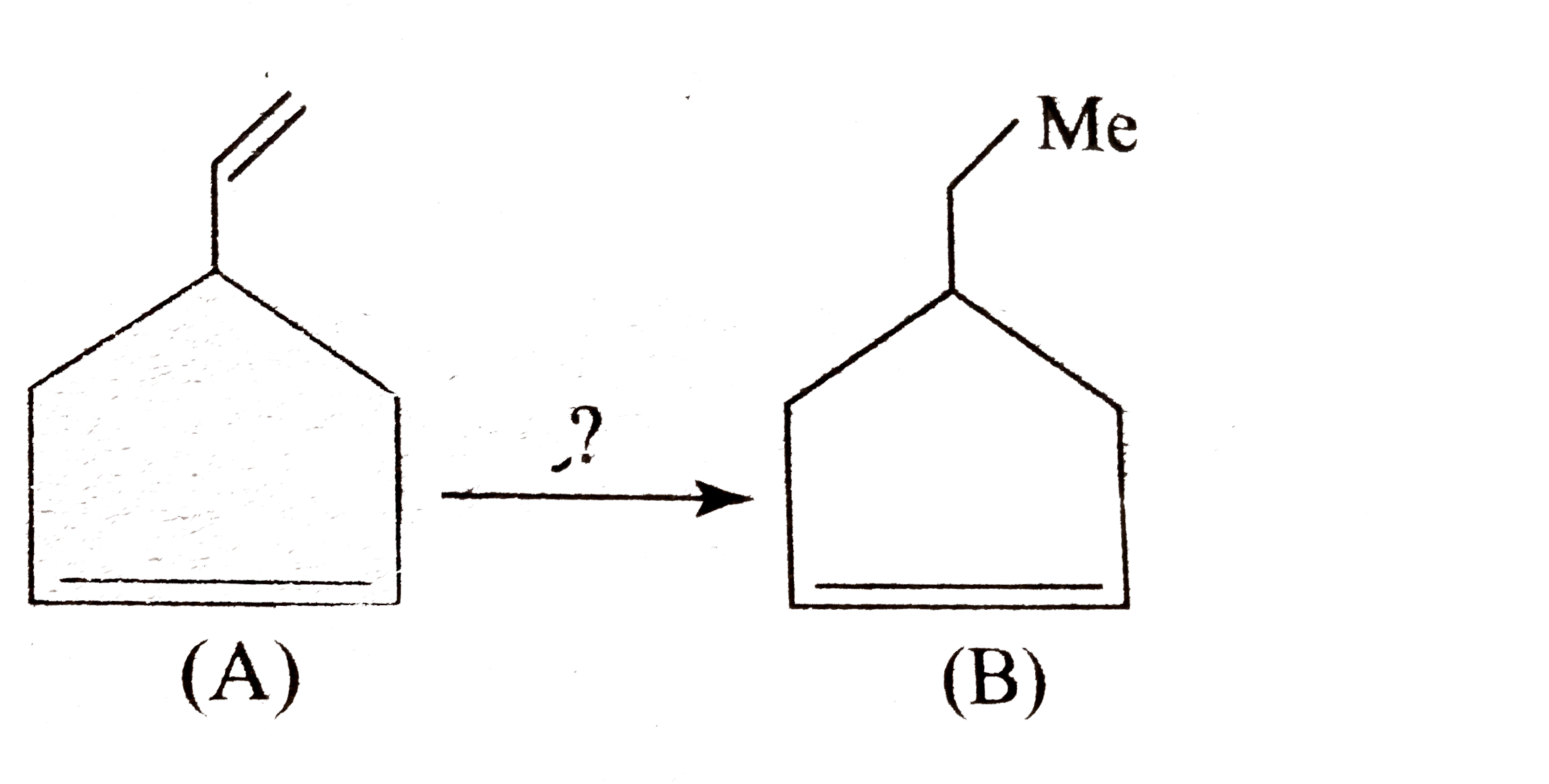The reagent used in the conversion of 1-butanol to 1-bromobutane is :
CHBr3
Br2
CH3Br
PBr3
The correct Answer is:D
To convert 1-butanol to 1-bromobutane, we need to identify the appropriate reagent that facilitates this transformation. Here’s a step-by-step solution:
Step 1: Identify the structure of 1-butanol
1-butanol is an alcohol with the molecular formula C4H10O. Its structure can be represented as:
CH3CH2CH2CH2OH
Step 2: Understand the reaction type
The conversion of an alcohol to a haloalkane (in this case, from 1-butanol to 1-bromobutane) is typically a substitution reaction. We need a reagent that can replace the hydroxyl (-OH) group with a bromine (Br) atom.
Step 3: Choose the appropriate reagent
For the conversion of alcohols to alkyl bromides, phosphorus tribromide (PBr3) is commonly used. PBr3 reacts with the hydroxyl group of the alcohol, facilitating the substitution of the -OH group with a bromine atom.
Step 4: Reaction mechanism
1. The oxygen atom in the -OH group of 1-butanol has lone pairs that can attack the phosphorus atom in PBr3.
2. This leads to the formation of an oxonium ion intermediate, where the -OH group is converted into a better leaving group.
3. A bromide ion (Br-) from PBr3 can then attack the carbon atom that was originally bonded to the -OH group, resulting in the formation of 1-bromobutane.
Step 5: Write the final product
The final product of the reaction is:
CH3CH2CH2CH2Br
This compound is known as 1-bromobutane.
Conclusion
Thus, the reagent used in the conversion of 1-butanol to 1-bromobutane is PBr3.
1-butanol is an alcohol with the molecular formula C4H10O. Its structure can be represented as:
CH3CH2CH2CH2OH
The conversion of an alcohol to a haloalkane (in this case, from 1-butanol to 1-bromobutane) is typically a substitution reaction. We need a reagent that can replace the hydroxyl (-OH) group with a bromine (Br) atom.
For the conversion of alcohols to alkyl bromides, phosphorus tribromide (PBr3) is commonly used. PBr3 reacts with the hydroxyl group of the alcohol, facilitating the substitution of the -OH group with a bromine atom.
1. The oxygen atom in the -OH group of 1-butanol has lone pairs that can attack the phosphorus atom in PBr3.
2. This leads to the formation of an oxonium ion intermediate, where the -OH group is converted into a better leaving group.
3. A bromide ion (Br-) from PBr3 can then attack the carbon atom that was originally bonded to the -OH group, resulting in the formation of 1-bromobutane.
The final product of the reaction is:
CH3CH2CH2CH2Br
This compound is known as 1-bromobutane.
Thus, the reagent used in the conversion of 1-butanol to 1-bromobutane is PBr3.
Topper's Solved these Questions
- BOOK - OP TANDONCHAPTER - HALOALKANES AND HALOARENES EXERCISE - Objective Questions Lavel -B48videos
HALOALKANES AND HALOARENES
- BOOK - OP TANDONCHAPTER - HALOALKANES AND HALOARENES EXERCISE - Objective Questions Lavel -B Set II This set contains the questions16videos
HALOALKANES AND HALOARENES
- BOOK - OP TANDONCHAPTER - HALOALKANES AND HALOARENES EXERCISE - Problems based on structure and properties18videos
HALOALKANES AND HALOARENES
- BOOK - OP TANDONCHAPTER - ELECTROCHEMISTRYEXERCISE - Matrix-Matching Type Question3videos
ELECTROCHEMISTRY
- BOOK - OP TANDONCHAPTER - ISOMERISM (STRUCTURAL AND STEROISOMERISM)EXERCISE - INTEGER7videos
ISOMERISM (STRUCTURAL AND STEROISOMERISM)
Similar Questions
Knowledge Check
- Question 1 - Select One
The reagent used in the conversion of 1-butanol to 1-bromobutane is :
ACHBr3BBr2CCH3BrDPBr3 - Question 2 - Select One
Reagent (s) used for the conversion of propanol into propane is
AI2/PB(i) TsCl/Py (ii) LiAlH4CCone. H2SO4DCH2N2 /ether - Question 3 - Select One
An appropriate reagent for the conversion of 1-propanol to 1-propanal is
Aacidified potassium dichromateBalkaline potassium permaganateCpyrindium chlorochromateDacidified CrO3
The reagents used for the conversion of benzene to benzaldehyde are
View SolutionReagent used for the conversion of propene to propane-1,2-diol
View Solution
Which reagent is used for the conversion of (A) to (B) ?View SolutionThe reagents for the following conversion
 View Solution
View SolutionCollin's reagent can cause the conversion of
View Solution


 :
: 